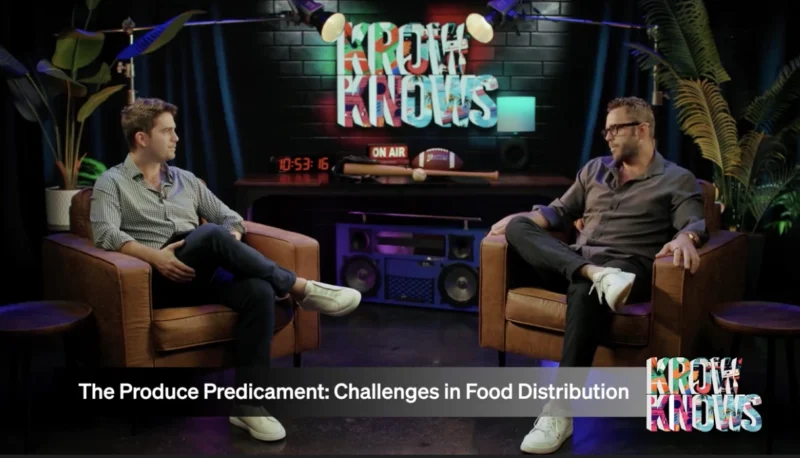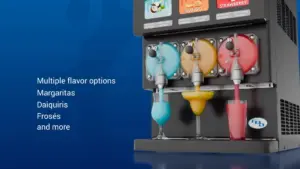Chobani President Comments on the Rising Demand for Healthy Foods and Plans to Keep Up With Employment Demand
The demand for healthy foods has spiked during the COVID-19 pandemic, leading to an increase in purchases of more health conscious foods. Watch or read below as Chobani Inc. President Peter McGuinness speaks to Bloomberg’s Guy Johnson and Alix Steel about this increased demand and what it’s meant for the company.
—
Host: So give us a perspective on a US basis, where how do you deal with your workers? How do you do a vaccination? How do you feel about where the country is right now?
McGuinness: Yeah, so let’s back it up. We’ll start with Chobani first. I’d look at it in two parts. One was keeping our employees safe and secure from the very beginning, and the other is our company’s role and the private sector’s role in helping the country get back to normal. On the first, we mandated masks very, very early on, 14 months ago, back in March last year. And both of our factories are in rural areas. And there were no cases at that time. And there was confusion around masks and are they effective? Do you need to wear them? And we created some really good compliance and behavior from the very beginning. And then we quickly did a child care subsidy because our plant workers are hourly workers and their kids were home from school.
And then we did special bonuses. So keeping your employees safe and secure is good for business, and it’s just the right thing to do. Fast forward the movie to the vaccinations being available. The first thing we did is we gave six hours, paid time off. All of our factory workers are hourly workers, so we gave three hours, paid for the first shot, three hours, paid for the second shot. And then what we did most recently is three weeks ago, we did an on site vaccination clinic in the largest yogurt facility in the world in twin falls, Idaho. Great turnout. And then last week, we did another one. So we have vaccinated for 300 people in one of our factories in Idaho. And this week, we’re doing upstate New York in South Evanston, and we’re going to do another one next week. So we feel really good about where we are with vaccinations. And we’re going to continue to do on site vaccinations until we get everybody who wants to be vaccinated, vaccinated. And I think it’s the companies that make it accessible.
Host: You just said something really interesting. Everybody that wants to get a vaccine. What about those who don’t?
McGuinness: We’re going to keep making it available and keep educating around the topic and what we’re finding is, the more people that get vaccinated, the more good word of mouth spreads. We also have education sessions with local doctors. So that they can talk to the community about the benefits of being vaccinated. So I think more and more people get vaccinated over time. And, of course, making it accessible and actually paying people to get vaccinated only helps.
Host: Yeah, I, I’ve heard about that sort of word of mouth thing as well. That’s got to cost though. And I’m wondering if you can help put in perspective, the cost you have to put out for that. In addition to any sort of other increase in costs that you see as we look ahead to tomorrow’s consumer price index.
McGuinness: Sure and I know you cover inflation a lot, but so so the cost of keeping your employees safe and secure is a large cost. But we don’t look at it as a cost. We look at as an investment. And if you have a healthy, happy, productive workforce. You’re going to perform well as a company, we have not closed our factory to our factories, run 24/7, uninterrupted since the pandemic began because our employees have been safe and productive. can’t put a price on that. And we perform well as a company, as a result, because the demand for healthy snacks are increasing exponentially. They were before covid, but they are in a big way during COVID. So I think that’s an investment. And whether that be a special bonus or a child care subsidy or paying people to take time off to be vaccinated costs a lot of money. But it’s an investment and it’s the right thing to do inflation.
Host: How much does it cost to train an employee? I’m wondering what the relative cost here is versus trading up somebody new, and I’m wondering whether or not you’re struggling to find people to do the jobs that you need doing. Are there plenty of people out there? We’ve still got relatively high unemployment in the United States. Is that a problem, or is it actually hard to find the people that you need with the skill set that you need to do the jobs?
McGuinness: It’s a great question, guy, we don’t have any issues on the labor side. Unemployment is relatively high, but we have very high retention rates and that goes back to doing right by the employees, which is something we have been a big part of from the very beginning. Right being a human company. So our retention is very high because we kept people safe and supported and they wanted to go to work throughout the pandemic. So we’ve had very, very low attrition. So we’ve been able to meet surging demand because of our retention. And we’re a sought after brand when it comes to hiring. And unemployment rates are still relatively high. So no issues in that regard.
Host: So then finish the conversation about cost pressures. You were mentioning how this costs money, but what about any supply chain issues? Yeah, and Alex, I know this is an area near and dear to your heart, and it’s affecting everybody, all companies. And it transcends Chobani, it transcends the US. It’s a global issue. So labor, you’re seeing steel, lumber, milk distribution, all seeing inflation across the board. You’re also seeing equipment delays because of border closures.
McGuinness: I’m happy how we performed and navigated this, because, you know, what companies need to do is execute the fundamentals. Well, we happen to be a food company. And there’s high demand for healthy, better for you snacks. So we just had to execute well. So we demand planned and forecast it very accurately and leaned in. So we were able to secure our raw materials without any near any interruption and very little inflation. But one thing we’re never going to do as a company is past those inflationary costs onto the consumer. In the end, we’re a modern food company that wants to make better food, more accessible, delicious, nutritious, natural food that’s accessible and affordable. Good food is a right, not a privilege. So we want to keep that accessibility. And if you perform well as a company, you should not need to pass that on to the consumer.
Host: And let’s talk about the conceiver, you talked about the pandemic accelerating a process that was already underway. Do you see some deceleration when people go back to the office, go back to something that is akin to what was normal life? You’ve done a deal with PepsiCo as well. I’m wondering what impact that’s going to have in terms of the channels, you’re going to be able to access. What does demand look like now that more and more people are getting vaccinated?
McGuinness: It’s a great question, guy. So we saw a surge in demand like many food companies did early on in the pandemic. With us, the surge became the baseline, so healthy habits had been created as more and more people seek out better for you snacks and healthier for you snacks. When we look at Nielsen March over march, this past march, over a year ago march, we actually grew when many companies did not. And that’s exciting to see that behavior’s been created. And there’s a new baseline. So we’ve not seen any slowing demand at all, actually. And we think that will continue because healthy habits have been formed. The PepsiCo partnership pilot program in the Northeast, which was geared around drug convenience and colleges, goes back to that, making good food, more accessible mission, vision. And they have a very sophisticated distribution network that can get into certain pockets that our products were not available. And and so this is two weeks old, and it’s really encouraging. So far, we’re seeing an uptick in sales and excitement in areas that our products weren’t as available before. So that’s super encouraging right now. It’s only two weeks into the pilot, but so far, so good.
*Bloomberg contributed to this content
—
Follow us on social media for the latest updates in B2B!
Twitter – @MarketScale
Facebook – facebook.com/marketscale
LinkedIn – linkedin.com/company/marketscale









